In the USA at the beginning of the twentieth century, children were sent by mail at the rate for chickens
Categories: Children | History | North America
By Pictolic https://pictolic.com/article/in-the-usa-at-the-beginning-of-the-twentieth-century-children-were-sent-by-mail-at-the-rate-for-chickens.htmlAt the beginning of the twentieth century, it was possible to send a child by mail in the USA: the service cost less than a dollar, which is cheaper than a train ticket, and at the same time the mail itself took care of the live parcel. The child was "packed" in a special mail bag, stamped on his clothes and the parcel was delivered to its destination. During the journey, the child was looked after by postal couriers. Then, of course, the service was banned, but several children were sent to relatives in this way.
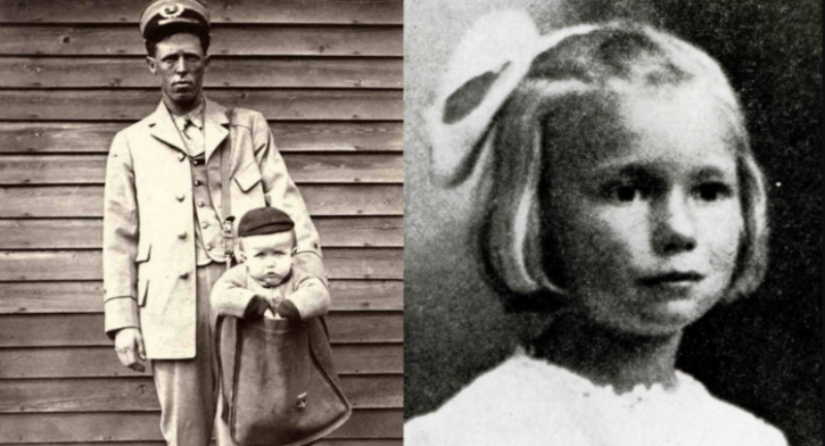
In 1913, the "Law on Mail" was published in the United States, which became a good incentive for the country's economy. Americans were able to buy food, clothing, grain, tobacco and medicines by mail, and parcels were now delivered to the recipient's home. But the legislators did not think through all the details, which some economical cunning people took advantage of.

The post office was obliged to deliver to the recipient not only fragile products, but also animals weighing up to 50 pounds (22.68 kg). This was done so that the villagers could send poultry by mail, but formally the conditions were suitable for small children.
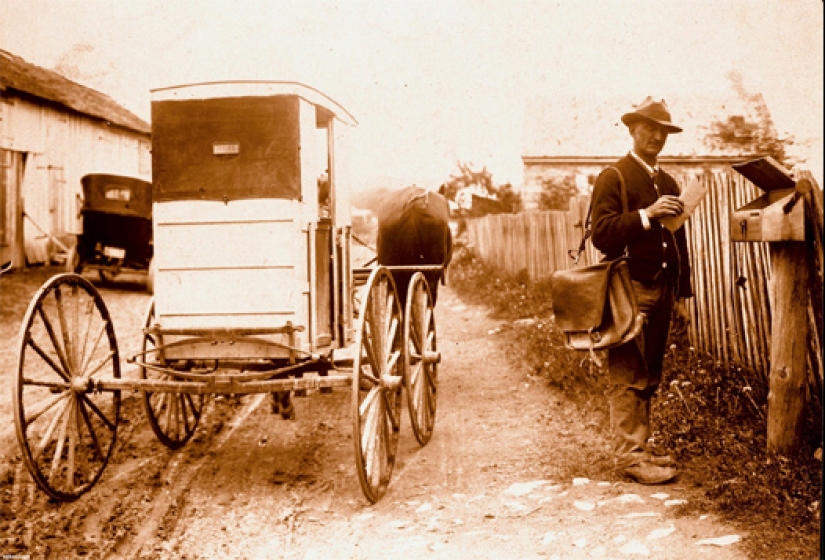
In January 1913, Mrs. and Mr. Bodge from Glen Este, Ohio, sent a parcel by rural mail to Louis Bodge. The shipment cost them 15 cents paid for a postage stamp, while the cargo was insured for $ 50. The cargo turned out to be the grandson of Louis Bodge: the parents felt that it would be cheaper to send the child by mail than to take him to his grandmother themselves.
This was the first, but not the last, child sent by mail. On January 27, 1913, Mrs. and Mr. Savis of Pine Hollow, Pennsylvania, sent a package with their daughter to James Byerly of Sharpsville in the same state. The girl was safely delivered to the recipient on the same day, the shipment cost her parents 45 cents.
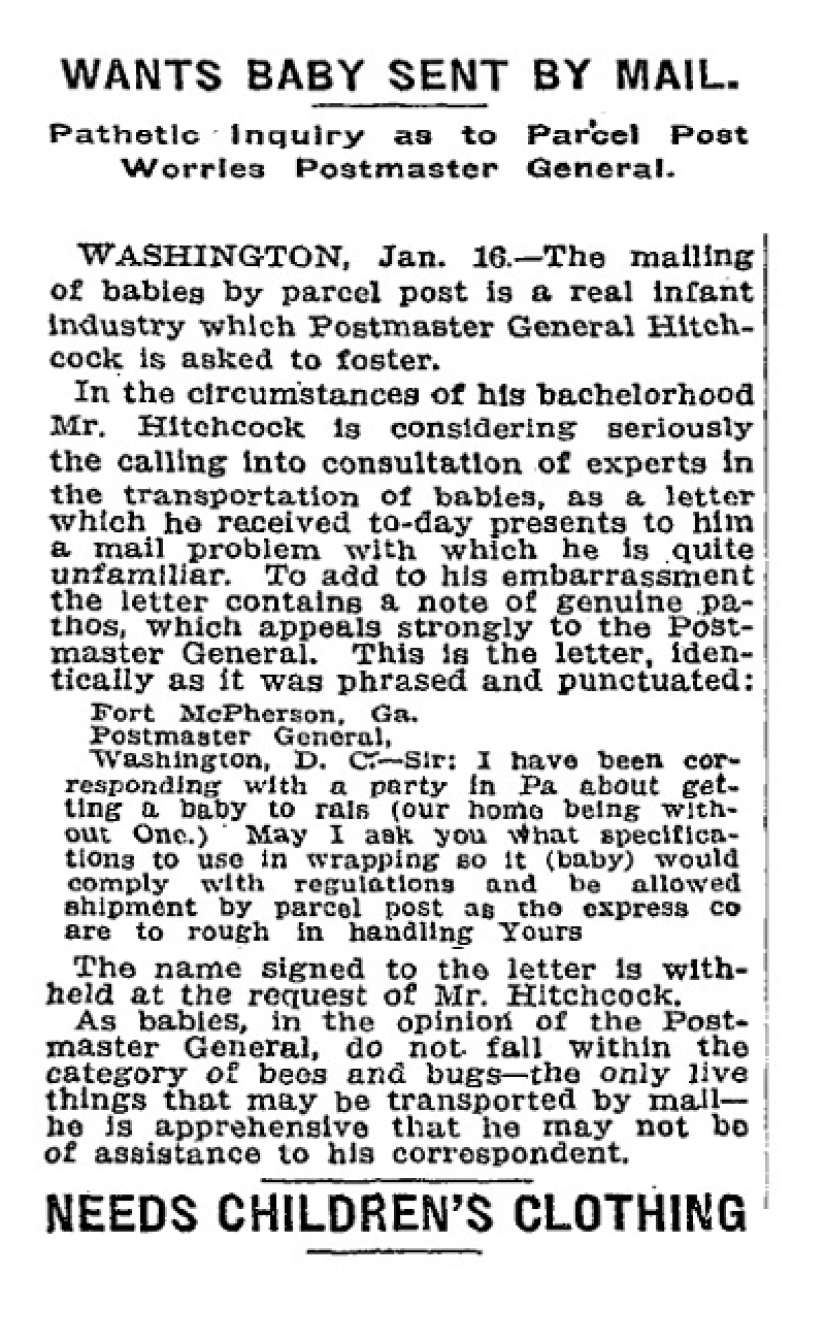
In the same year, 1913, they tried to cancel the practice, pointing out that children are neither bees nor beetles — the only living beings allowed to be mailed.
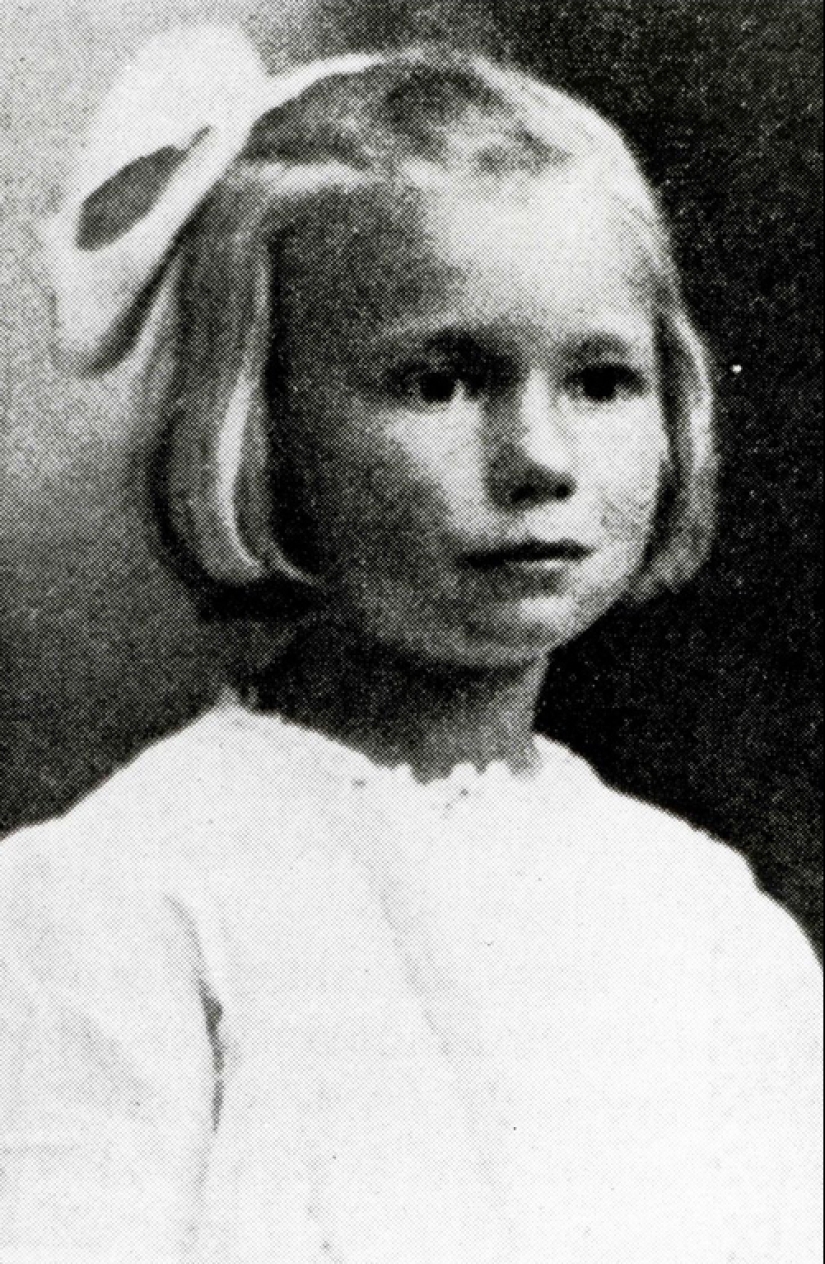
On February 19, 1914, the parents of five-year-old Mae Perstorf from Idaho sent the girl by mail to visit her grandmother - she lived 73 miles away in Oregon. The girl weighed less than the maximum permissible norm, so the parcel was sent at the chicken rate, paying only 53 cents.
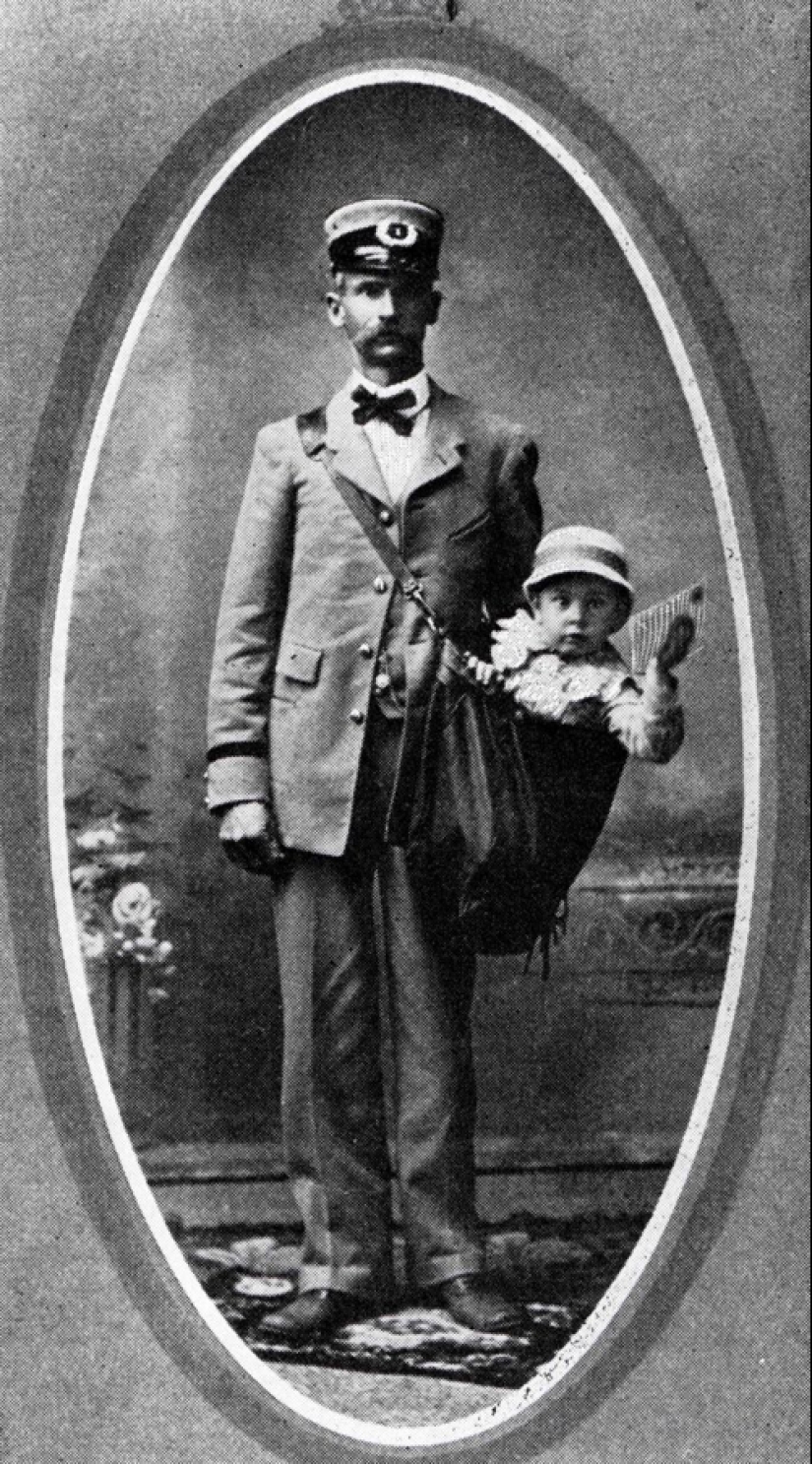
In 1914, the Chief Postmaster of the United States, General Albert Sidney Burlison, issued a decree prohibiting postmasters from accepting children for shipment. However, this did not prevent several families from sending parcels with babies. 1915 was a record year for sending children.
It seems that the last such case was the forwarding of three-year-old Maud Smith: the girl was returned from her grandparents to her mother, Selina Smith from Kentucky, and the situation came under postal investigation.
On June 13, 1920, the postal administration strictly prohibited sending children by the postal service. Since then, such cases have not been repeated.
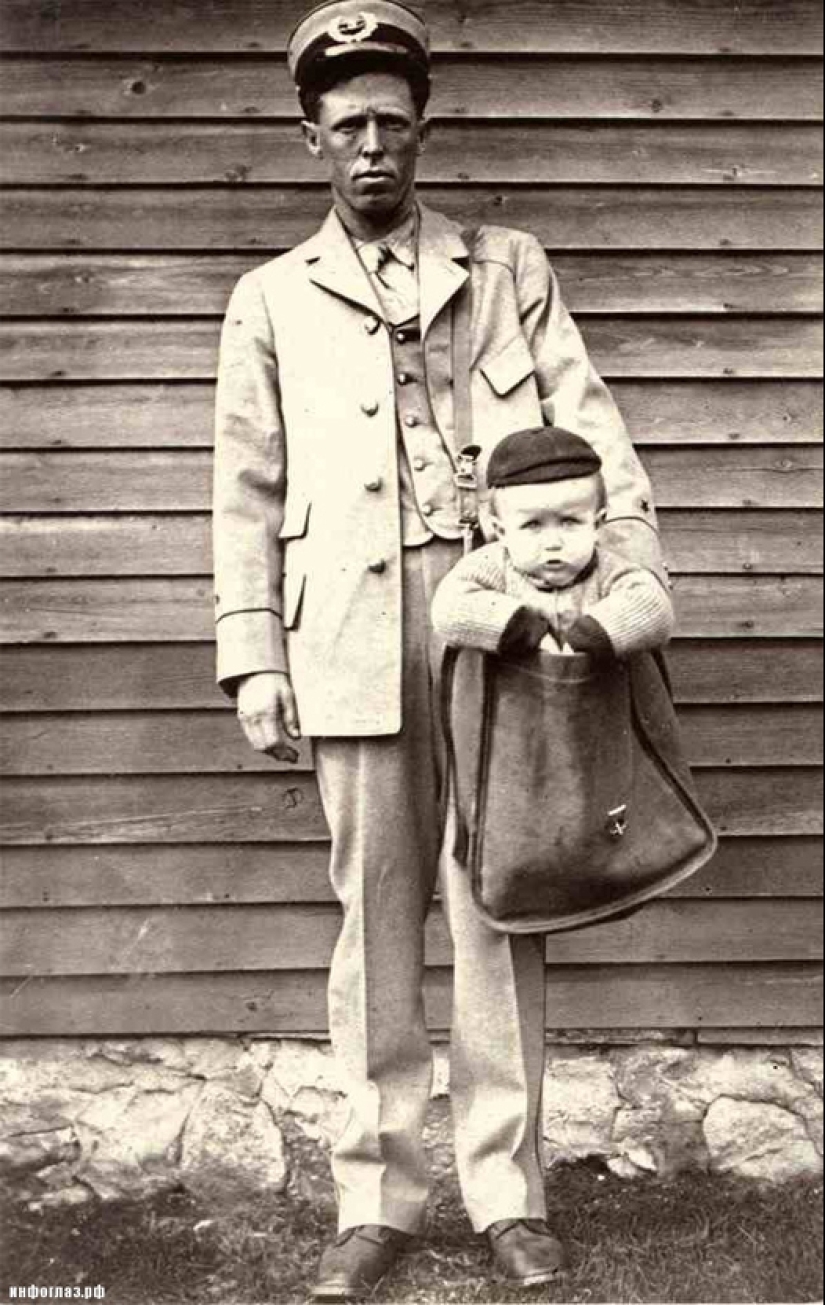
This photo illustrated the text of the USPS announcement that the post office would no longer accept children for forwarding.
Recent articles

Always interesting to learn or discover something new and interesting. The thirst for knowledge and curiosity is what animates our ...

I bet you've had a dream at least once in which your teeth fall out. This is one of the most popular queries in search engines and ...

Everyone knows that annoying advertising letters sent by email are called spam. But few people thought about what this word means ...